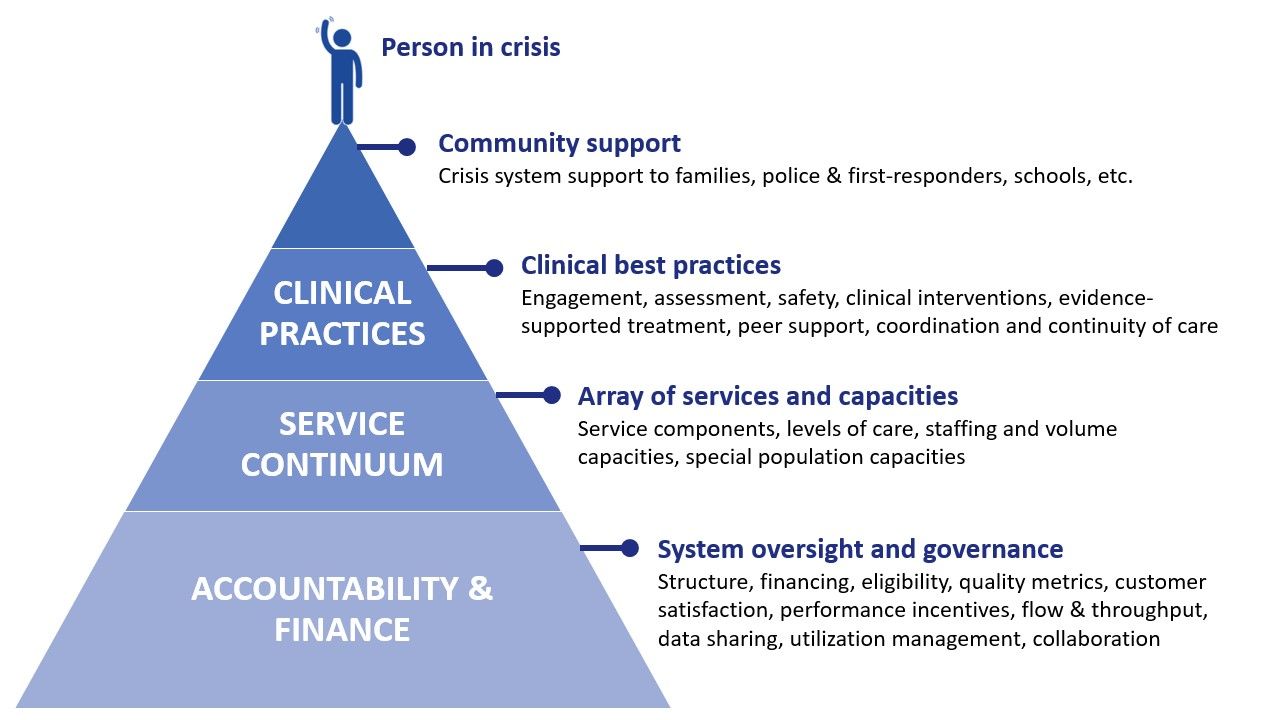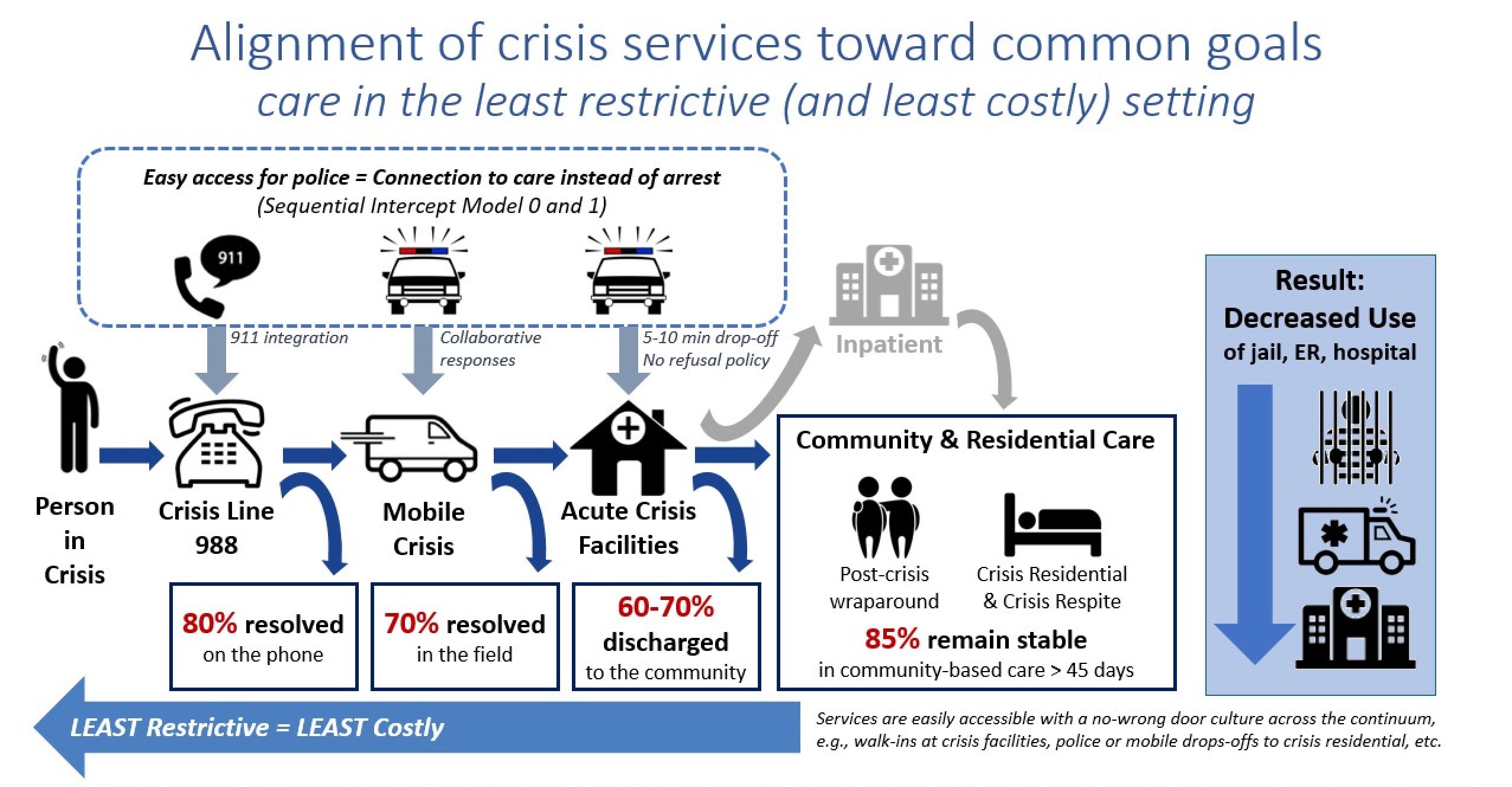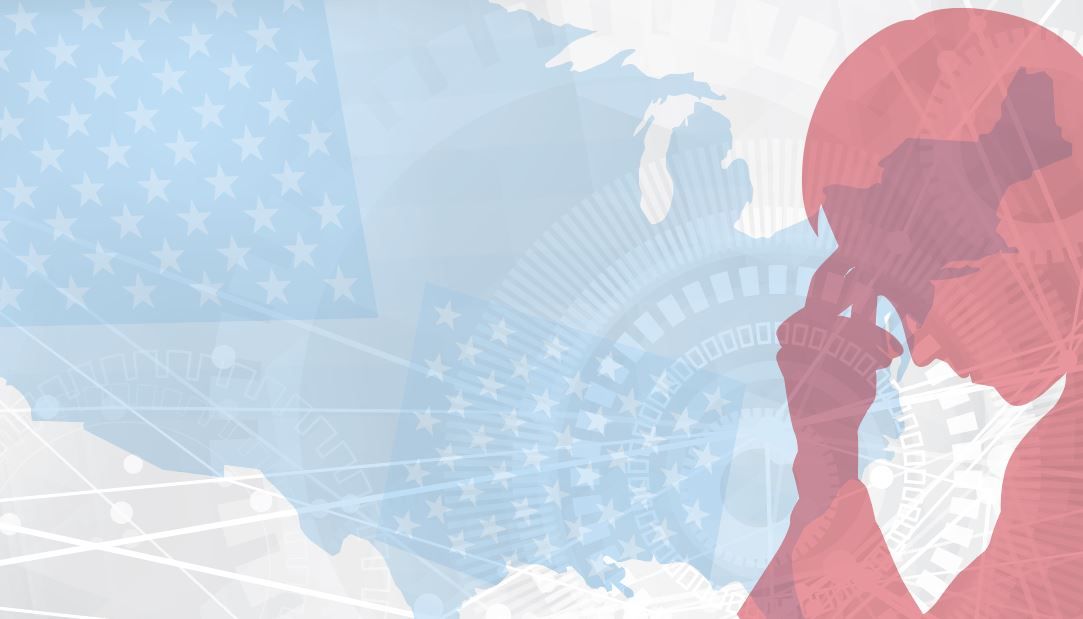Article
Behavioral Health Crisis Care’s Carpe Diem Moment
Author(s):
We have a golden opportunity to determine the future of behavioral health crisis care in the United States.
AnnetteShaff_AdobeStock

CRISIS CONNECTIONS
One of the greatest disparities in health care is the way in which our society addresses behavioral health emergencies. While a 911 call for chest pain results in an ambulance response with trained emergency medicine technicians, a call for suicidal ideation often triggers an armed law enforcement response. With police as the default first responders, individuals in behavioral health crisis account for a quarter of police shootings and more than 2 million jail bookings each year. These disparities are amplified for people of color. Black Americans are 2.6 times more likely to be killed by police than non-Hispanic whites—but for Black Americans with mental illness, the risk is nearly tenfold.1
The inequity continues at the emergency department (ED), where the patient with chest pain receives rapid assessment, treatment, and, if needed, admission to an inpatient bed, usually in the same hospital. The individual with the behavioral health emergency has a very different experience. Most EDs and hospitals lack the capability to provide psychiatric assessment and treatment. Instead, an individual can “board” for hours, even days, awaiting transfer to an outside facility for inpatient psychiatric admission. In addition to the poor experience for the individual in crisis, this creates significant operational and financial burdens on the health care system. We can and should do better.
Fortunately, multiple catalysts have converged to create the right conditions for transformative change:
- The pandemic and its associated stresses have elevated awareness of the importance of behavioral health care. Relief packages and other pending legislation contain increased funding for expanded behavioral health services, infrastructure, and workforce, often with broad bipartisan support.
- The new 988 mental health crisis line goes live in July. While the initial soft launch is focused on improving access to suicide hotline services, 988 represents the first step in a much-needed expansion in behavioral health crisis care, similar to how 911 precipitated the development of emergency medical systems (EMS) and trauma care.
- Social justice movements have sparked a national conversation about policing reform. Most agree that law enforcement should not be the default first responders to behavioral health emergencies, and community leaders are looking to build or partner with crisis services as an alternative to police involvement.
To make the most of this pivotal moment, we need a clear vision for behavioral health crisis systems and a pathway to get there. This was our intention in creating the Roadmap to the Ideal Crisis System: Essential Elements, Measurable Standards and Best Practices for Behavioral Health Crisis Response. Written by the Group for the Advancement of Psychiatry (GAP) Committee on Psychiatry and the Community, and published by the National Council for Mental Wellbeing, the report makes several bold statements in its vision, beginning with the use of the word “ideal.” For too long, we have settled for a patchwork of poorly coordinated, inadequately resourced services that do not meet the needs of individuals and families struggling with behavioral health emergencies.
The Roadmap posits that a behavioral health crisis system is an essential community service from which we should expect the same level of quality and consistency as we do for medical emergency response. It should be able to serve everyone regardless of payer, age, or acuity, including those with cooccurring substance use disorders, development disabilities, and involuntary legal status. Furthermore, a crisis system is more than a single program or collection of services—it is a coordinated system with a governance and accountability structure that ensures needs are met effectively and efficiently.
To achieve this ideal, the Roadmap describes 3 interacting design elements, along with measurable indicators for each. These elements provide the structure for the major sections of report: 1) accountability and finance, 2) service continuum and capacities, and 3) clinical best practices (Figure 1).
Figure 1. The 3 Interacting Design Elements Outlined in the Roadmap to the Ideal Crisis System

The report also outlines steps for community leaders and advocates can take to begin planning, implementation, and continuous improvement. This framework complements the other reports that focus defining core elements of the service continuum (eg, the Substance Abuse and Mental Health Services Administration’s [SAMHSA’s] Best Practice Toolkit and its “someone to call, someone to respond, somewhere to go” rubric).
The Arizona crisis system demonstrates how the concepts outlined in the Roadmap can be put into practice in real-world settings. In the accompanying graphic, which is based on the crisis system in Tucson, a robust continuum of programs and services work together as a coordinated system. Stakeholders agree on common system values such as preventing avoidable jail, ED, and hospital use by providing care in the least restrictive setting that can safely meet the needs of an individual experiencing a crisis. The crisis continuum is composed of an array of services organized along a continuum of intensity, restrictiveness, and cost (Figure 22).
Figure 2. Alignment of Crisis Services Toward Common Goals2

At all points along the continuum, easy access for law enforcement (eg, crisis line staff co-located with 911, crisis facilities with quick police turnaround times and “no wrong door” policies) facilitates connection to treatment instead of arrest.
Governance and accountability are key to ensuring that crisis services operate as an organized and coordinated system. In the Arizona model, the Regional Behavioral Health Authority (RBHA) serves as the “accountable entity” via its role as the single payer and regulator for the crisis system. The RBHA contracts with multiple service providers to create the crisis continuum and sets expectations for system performance that are aligned with overarching system goals. Contracts and culture confer a “preferred customer” status to law enforcement so that, for example, response time targets for mobile crisis are faster for calls that involve law enforcement.
To maximize the impact of all funding streams, the RBHA is financed via braided funding from a variety of sources (eg, Medicaid, SAMHSA block grants, state and local funds) and accountable to the state for both clinical and fiscal outcomes. Because less restrictive community-based care settings also tend to be less costly, the end result is a sustainable system that is a worthwhile investment from both a clinical and fiscal standpoint.
The next several years pose a golden opportunity for determining the future of behavioral health crisis care in the United States. This is the perfect time for psychiatrists and other clinical leaders to get involved and make a difference. Here are some suggestions:
- Read the Roadmap to the Ideal Crisis System report.
- All states have received federal grant funds for crisis system planning. Find out who is leading these efforts in your state and/or local community, and offer to help provide stakeholder feedback and representation.
- Stay abreast of federal and local legislation via professional societies or advocacy organizations like the National Alliance on Mental Illness’ (NAMI’s) #ReimagineCrisis campaign. Key issues include increased crisis funding via the SAMHSA block grants; parity coverage by private health plans for behavioral health crisis services commiserate with that of medical emergencies; and workforce development incentives such as loan repayment for those working in crisis care sites.
Margie Balfour, MD, PhD

These are exciting times for crisis care. Carpe diem!
Dr Balfour is chief clinical quality officer at Connections Health Solutions, a leading innovator in behavioral health crisis care that emphasizes treatment in the least restrictive setting with improved quality and reduced hospital admissions. She is also an associate professor of psychiatry at the University of Arizona. She is a coauthor of the report, Roadmap to the Ideal Crisis System: Essential Elements, Measurable Standards and Best Practices for Behavioral Health Crisis Response. Learn more about the Connections Health Solutions model of care by visiting their website.
References
1. Saleh AZ, Appelbaum PS, Liu X, et al. Deaths of people with mental illness during interactions with law enforcement. Int J Law Psychiatry. 2018;58:110-116.
2. Balfour ME, Hahn Stephenson A, Delany-Brumsey A. Cops, clinicians, or both? collaborative approaches to responding to behavioral health emergencies. Psychiatr Serv. 2022;73(6):658-669.
Would you like to learn more about crisis care? Be sure to check out our July 2022 cover story about the new 988 suicide hotline.






